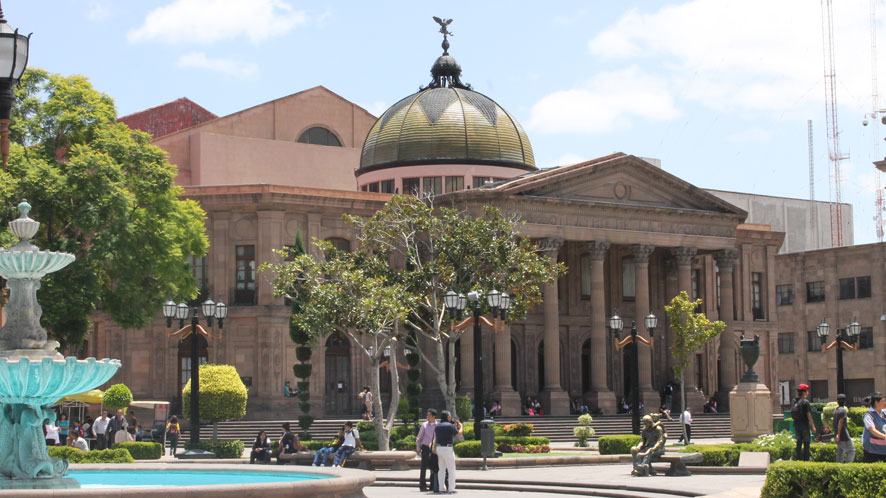The area now occupied by this great little town was part of the Carmelite convent complex which, after the reform laws, was detached from the Convent and used as a prison in 1870. It was not until 1889 that its construction was begun by the Architect. José Noriega and in 1894 it was inaugurated. The Neoclassical style of its façade, the interior was modified by the engineer Flavio Madrigal and the architects Ignacio Algara and Francisco Cossio in 1949 for the first time and a second intervention in 1965.
Inside you can see Fernando Leal’s mosaics and bronze figures made by sculptor Joaquín Arias. Its Belgian bronze dome, crowned by the imperial porphyry eagle, lets the light of the zenith pass over the statue of the dancer placed in the center of the vestibule, the busts of Sor Juana Ines de la Cruz, Juan Ruiz de Alarcon, María Teresa Montoya and Manuel José Othón.
It has a capacity of approximately 1450 people, annexed to the Theater are the rooms Flavio F. Carlos, for concerts and Germán Gedovius, for exhibitions.
In this Forum, the main one of the State and one of the most important in the country, an infinity of artists, ballets and orchestras have performed, one of them, the potosina Lupe Velez, the work of the Lady in Black and the Symphonic Orchestra of San Luis Potosí.

